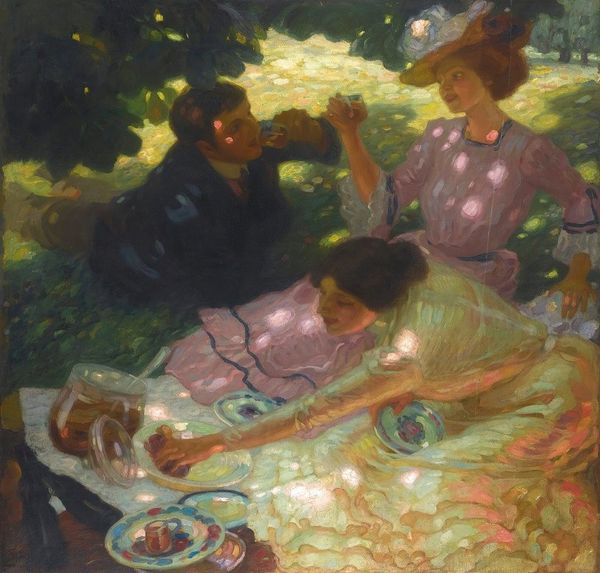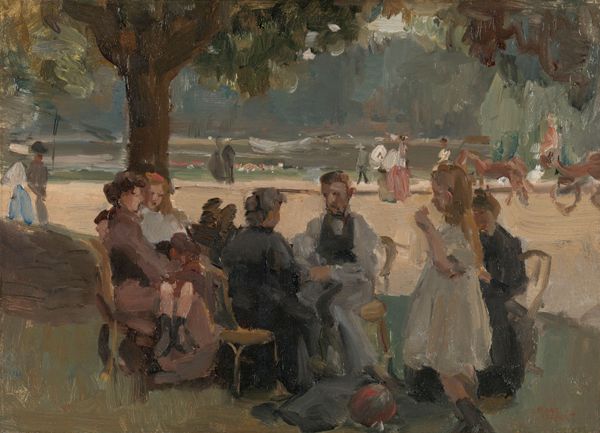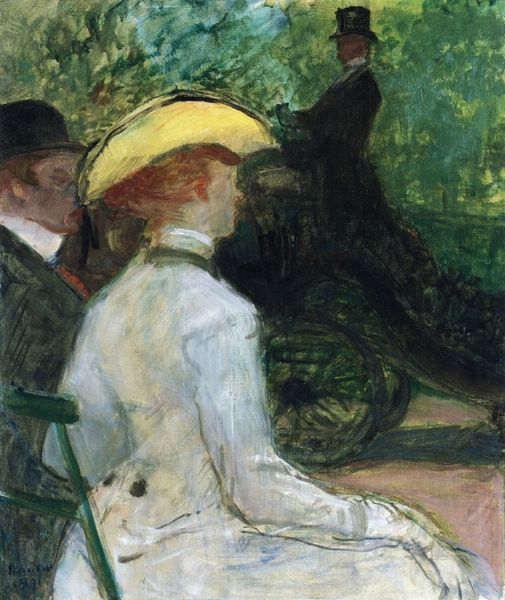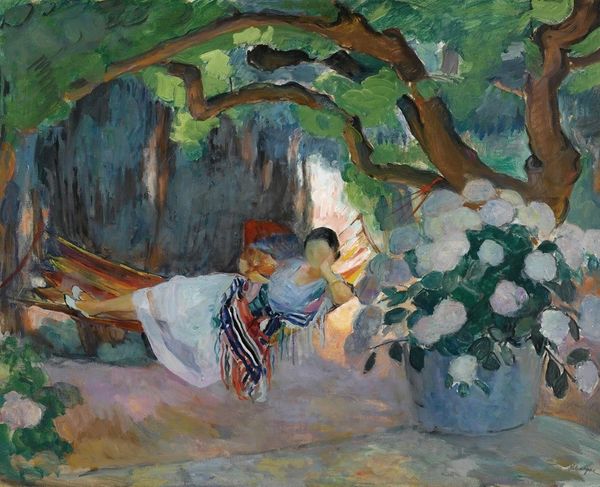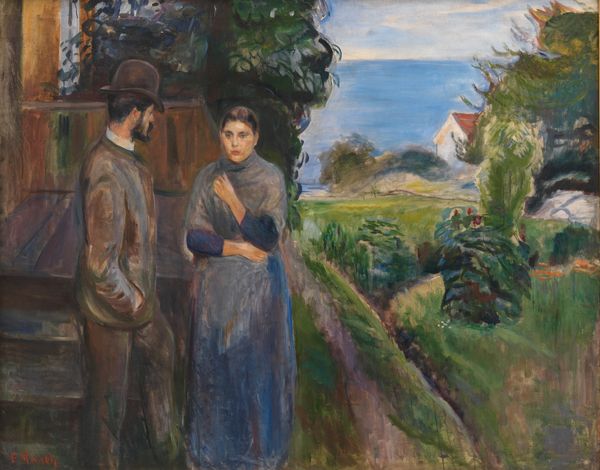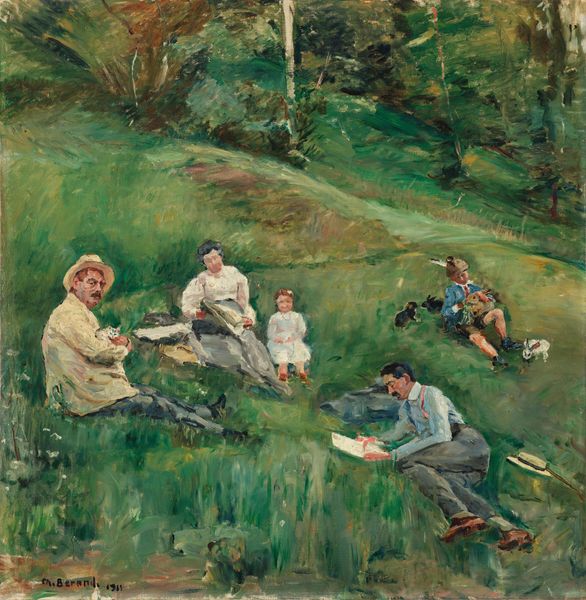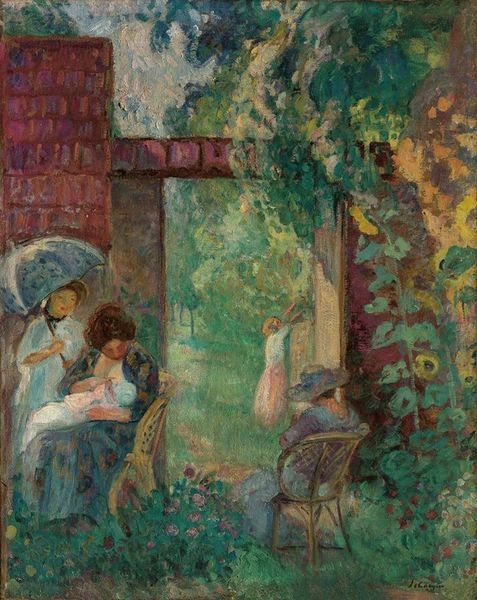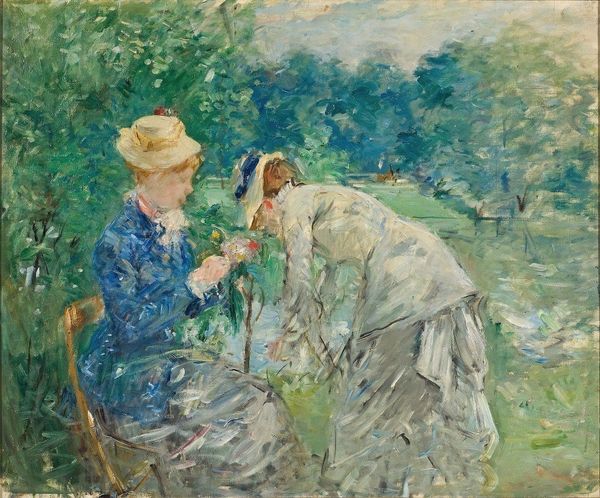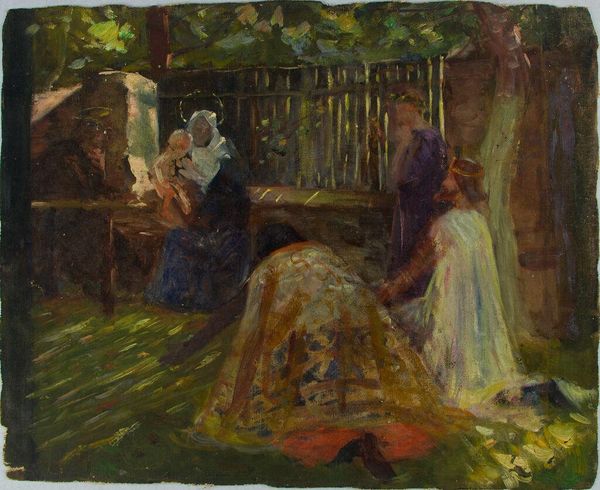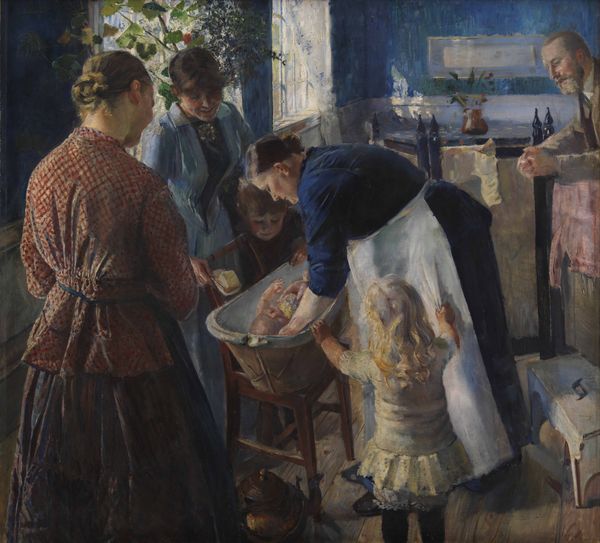
Dimensions: 120 cm (height) x 102.5 cm (width) (Netto)
Curator: This is "In the Vicar's Garden, Christiansø," painted by Edvard Weie in 1917. Editor: It feels instantly… oppressive. A languid summer afternoon, perhaps, but under a thick, almost suffocating blanket of green. Curator: Oppressive is a strong word. Consider the way Weie employs impasto. The paint application is loose, gestural. See how light shimmers across the white dress, or the subtle gradations in the foliage. It’s a sophisticated play of color and texture that denies any singular interpretation. Editor: The visible brushstrokes contribute to the unease, actually. They emphasize artifice, highlighting the disconnect between idealized leisure and lived experience. The faceless figures, especially the woman on the bench, exude a palpable sense of alienation and restriction, doesn’t it strike you? What narrative is concealed in the artist’s canvas? Curator: Concealed narrative? I think you are reading a lot into an otherwise uncomplicated composition. It appears a slice of life—an intimate glimpse of Weie’s social circle, captured through an impressionistic lens. The focus is clearly on capturing the ephemeral quality of light. Editor: But whose life? An upper-class enclave, removed from the turmoil of the time? While the painting ostensibly captures light and form, its significance extends into the historical circumstances that made it possible. What choices did the artist make to capture an ideal versus reality, when World War One cast a long shadow. Curator: Perhaps, but I contend that focusing on socio-political issues overlooks the artist’s primary intention—to explore the inherent properties of the oil-paint medium and plein-air style that define the artwork. Editor: True, but the decision to depict leisure at this time has political undertones. That green isn't just decorative, it feels…cloying, doesn’t it? As if nature itself is complicit in their social confinement. Curator: That’s a valid reading. What stands out to me is how the formal composition creates dynamism using the strong contrast between the horizontal stripes of the bench and the dark diagonals in the background. Editor: Exactly. What has been an examination of technique yields so many complex issues on the construction and impact of representation and meaning-making. The conversation does not end, as it remains open for analysis of history and aesthetics.
Comments
No comments
Be the first to comment and join the conversation on the ultimate creative platform.

